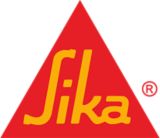
SikaTile®-905 Fat Mud
SikaTile®-905 Fat Mud is a Portland Cement based tile mortar, pre-blended and packaged in 50 lb. bag for easier handling.
- For use as a scratch coat and wall render, or as a concrete patch from 1/4" to 2" (6 mm to 5 cm)
- Easy to use
Usage
Mortar setting bed on vertical walls over an appropriate membrane and metal lath. Available in Northern California region only.Advantages
- For use as a scratch coat and wall render, or as a concrete patch from 1/4" to 2" (6 mm to 5 cm)
- Easy to use
Packaging
- 50 lb (22.7 kg) bag
- Bulk/Silo - call for details
Color
Gray powder
Product Details
APPROVALS / STANDARDS
Raw materials meet or exceed the following standards:
- Portland Cement Type II/V ASTM C 150
- Mortar Sand ASTM C 144
- Type S Lime ASTM C 207
Shelf Life
12 months from date of production if stored properly in original, unopened and undamaged sealed packaging
Storage Conditions
Store dry at 40–95 °F (4–35 °C).
Protect from moisture. If damp, discard material
Application
Mixing Ratio
1 gal. and 1 pt. (4.25 L) per bag
Coverage
| Thickness | 50 lb. bag | 1 ton silo |
| 1/2" (1.27 cm) | 8 ft2 (0.74 m2) | 400 ft2 (37.16 m2) |
(Coverage figures do not include allowance for surface profile and porosity or material waste)
MIXING
Mix approximately 1 gallon and 1 pint (4.25 L) of clean potable water in the temperature range of 50 to 80 ºF per bag. Mix thoroughly until a consistent mix is obtained.
FAQ
No, they are not. For standard-size tile < 15”, the substrate flatness tolerance is no more than ¼” variance in 10”. For tile > 15”, the substrate flatness tolerance is no more than 1/8” variance in 10’. This applies to any substrate whether it is a wall, floor, ceiling etc.
No. Thinset is an adhesive, not a patching or leveling compound. Thinsets are
designed to be a certain thickness and when that thickness is greater than what the thinset can handle, shrinking will occur. Use a product that is designed for patching or leveling.
Some old “cutback” black residues may contain asbestos. If the residue has asbestos, a professional will need to remove it. If the black residue does not contain asbestos, it may be removed by mechanical means such as sand blasting or grinding. Some products can encapsulate the black residue, preventing mechanical removal. Check Technical Services to find the correct products.
In most cases, flat is better than level. For example, an exterior deck needs to be flat and not level. Building codes require the deck to be pitched away from the building, which would make the deck not level. But, to install tile the deck must be flat. So, it all depends on the application.
No, they are not. For standard-size tile < 15”, the substrate flatness tolerance is no more than ¼” variance in 10”. For tile > 15”, the substrate flatness tolerance is no more than 1/8” variance in 10’. This applies to any substrate whether it is a wall, floor, ceiling etc.
No. Thinset is an adhesive, not a patching or leveling compound. Thinsets are
designed to be a certain thickness and when that thickness is greater than what the thinset can handle, shrinking will occur. Use a product that is designed for patching or leveling.
Some old “cutback” black residues may contain asbestos. If the residue has asbestos, a professional will need to remove it. If the black residue does not contain asbestos, it may be removed by mechanical means such as sand blasting or grinding. Some products can encapsulate the black residue, preventing mechanical removal. Check Technical Services to find the correct products.
In most cases, flat is better than level. For example, an exterior deck needs to be flat and not level. Building codes require the deck to be pitched away from the building, which would make the deck not level. But, to install tile the deck must be flat. So, it all depends on the application.
